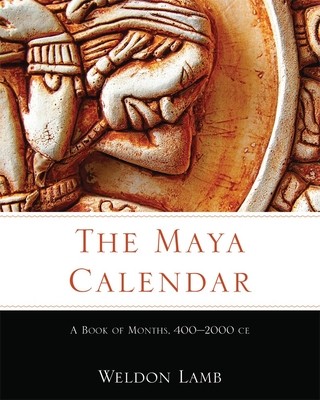
- We will send in 10–14 business days.
- Author: Weldon Lamb
- Publisher: University of Oklahoma Press
- ISBN-10: 0806155698
- ISBN-13: 9780806155692
- Format: 20.6 x 25.7 x 3.3 cm, hardcover
- Language: English
- SAVE -10% with code: EXTRA
Reviews
Description
By 1,800 years ago, speakers of proto-Ch'olan, the ancestor of three present-day Maya languages, had developed a calendar of eighteen twenty-day months plus a set of five days for a total of 365 days. This original Maya calendar, used extensively during the Classic period (200-900 CE), recorded in hieroglyphic inscriptions the dates of dynastic and cosmological importance. Over time, and especially after the Mayas' contact with Europeans, the month names that had originated with these inscriptions developed into fourteen distinct traditions, each connected to a different ethnic group. Today, the glyphs encompass 250 standard forms, variants, and alternates, with about 570 meanings among all the cognates, synonyms, and homonyms. In The Maya Calendar, Weldon Lamb collects, defines, and correlates the month names in every recorded Maya calendrical tradition from the first hieroglyphic inscriptions to the present--an undertaking critical to unlocking and understanding the iconography and cosmology of the ancient Maya world. Mining data from astronomy, ethnography, linguistics, and epigraphy, and working from early and modern dictionaries of the Maya languages, Lamb pieces together accurate definitions of the month names in order to compare them across time and tradition. His exhaustive process reveals unsuspected parallels. Three-fourths of the month names, he shows, still derive from those of the original hieroglyphic inscriptions. Lamb also traces the relationship between month names as cognates, synonyms, or homonyms, and then reconstructs each name's history of development, connecting the Maya month names in several calendars to ancient texts and archaeological finds. In this landmark study, Lamb's investigations afford new insight into the agricultural, astronomical, ritual, and even political motivations behind names and dates in the Maya calendar. A history of descent and diffusion, of unexpected connectedness and longevity, The Maya Calendar offers readers a deep understanding of a foundational aspect of Maya culture.
EXTRA 10 % discount with code: EXTRA
The promotion ends in 17d.12:48:50
The discount code is valid when purchasing from 10 €. Discounts do not stack.
- Author: Weldon Lamb
- Publisher: University of Oklahoma Press
- ISBN-10: 0806155698
- ISBN-13: 9780806155692
- Format: 20.6 x 25.7 x 3.3 cm, hardcover
- Language: English English
By 1,800 years ago, speakers of proto-Ch'olan, the ancestor of three present-day Maya languages, had developed a calendar of eighteen twenty-day months plus a set of five days for a total of 365 days. This original Maya calendar, used extensively during the Classic period (200-900 CE), recorded in hieroglyphic inscriptions the dates of dynastic and cosmological importance. Over time, and especially after the Mayas' contact with Europeans, the month names that had originated with these inscriptions developed into fourteen distinct traditions, each connected to a different ethnic group. Today, the glyphs encompass 250 standard forms, variants, and alternates, with about 570 meanings among all the cognates, synonyms, and homonyms. In The Maya Calendar, Weldon Lamb collects, defines, and correlates the month names in every recorded Maya calendrical tradition from the first hieroglyphic inscriptions to the present--an undertaking critical to unlocking and understanding the iconography and cosmology of the ancient Maya world. Mining data from astronomy, ethnography, linguistics, and epigraphy, and working from early and modern dictionaries of the Maya languages, Lamb pieces together accurate definitions of the month names in order to compare them across time and tradition. His exhaustive process reveals unsuspected parallels. Three-fourths of the month names, he shows, still derive from those of the original hieroglyphic inscriptions. Lamb also traces the relationship between month names as cognates, synonyms, or homonyms, and then reconstructs each name's history of development, connecting the Maya month names in several calendars to ancient texts and archaeological finds. In this landmark study, Lamb's investigations afford new insight into the agricultural, astronomical, ritual, and even political motivations behind names and dates in the Maya calendar. A history of descent and diffusion, of unexpected connectedness and longevity, The Maya Calendar offers readers a deep understanding of a foundational aspect of Maya culture.


Reviews